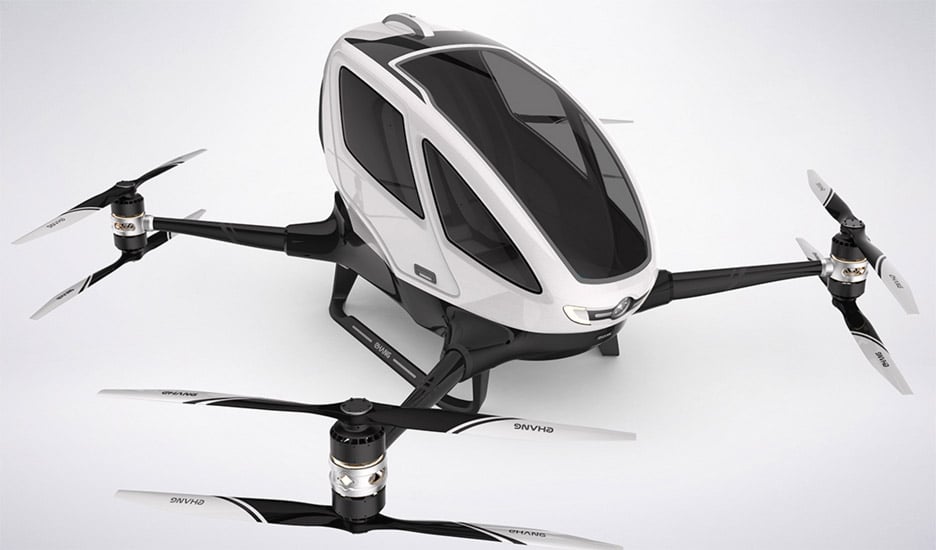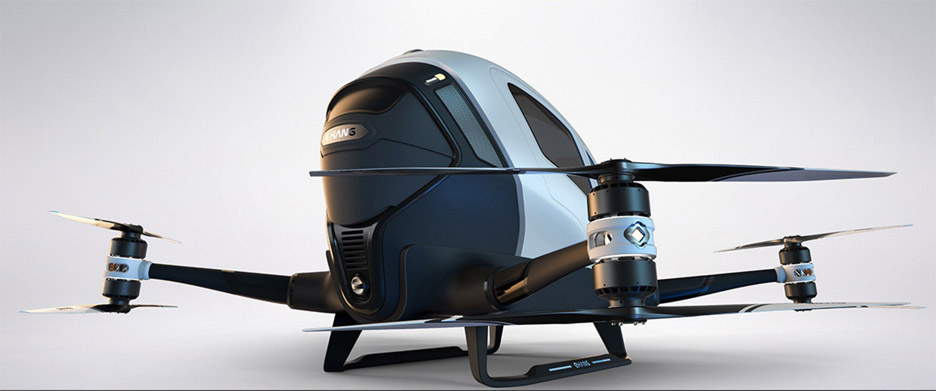Dubai to begin flying world's first passenger drone
A passenger-carrying drone that will transport individuals through the air without a pilot will begin flying over Dubai's skyline from this summer.
The arrival of the Ehang 184, dubbed the world's first passenger drone, was announced by the head of Dubai's Roads and Transportation Agency Mattar al-Tayer at the World Government Summit, which is currently underway in the gulf city.
It will be the first time the electric vehicle, which launched at CES in 2016, has been in regular use anywhere in the world.
Al-Tayer said the agency planned to put the Ehang 184 into operation in July. It has already had its flying debut over the country's Burj al-Arab skyscraper hotel.

It can carry one passenger weighing up to 100 kilograms and can stay airborne for 30 minutes on one charge. Once inside, the passenger uses a touchscreen to select a destination, and the drone is then "auto-piloted" by a command centre, according to a video released by the government agency.
There is no passenger override function, which means that anyone can travel in the drone without a pilot's licence. However, this also means the user can't take control in an emergency.
Manufacturer Ehang says the drone is designed so that even if one propeller fails, the vehicle will still be able to complete its flight. It also incorporates the "Ehangen fail-safe system", which means in the event of a malfunction the drone will immediately land in the nearest available area.

The announcement supports predictions made by designer Paul Priestman that personal flying machines modelled after drones would be the future of transportation.
"We've got these electric drones flying around everywhere," he told Dezeen last year. "[Electric planes are] just a scaled up version really."
"I think that's going to get really interesting – it could be the beginning of personalised transportation," he added. "It's like going back to the idea of jetpacks, but with lots of little drones,"
Drones on a smaller scale are being utilised for everything from Amazon deliveries to medical supply transportation.
Designers have also envisioned other possible future uses for unmanned aerial vehicles, including to help police patrol London and to build bridges and other architectural structures.